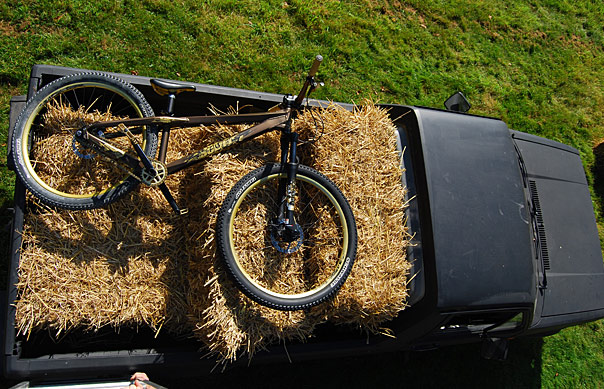THE WHYTE E120
This bike teeters on the very edge of the kind of bikes we have in this magazine. Its inclusion is hardly about its looks (but then who looks at a bike when their riding?), but about carrying speed. And everyone wants a bit of that action. I really have a problem with this bike though. I’d have one but a cloud hangs over my decision. At first it was fast – incredibly fast – clocking up times on an old two minute downhill race track barely two seconds off that on a downhill bike. Granted it was one of the shallower events, a mixture of dirt singletrack and arcing turns before it descended off–camber into bombholes and root. On such a fast track requiring power and a bike that covered ground efficiently and swiftly this bike – a cross country race bike in most peoples eyes – simply tore the place apart. The going was heavy, as in wet, like it is quite frequently in this country, we had mud tyres on and it was immense fun. Riding 6” bikes later in the day just seemed pretty dull and sluggish in comparison. As a horse for that particular course then it was up there. Several weeks later we returned to Glyncorrwg. Now that place has seen some action this summer. A case of being ripped apart by the summer storms. The Whyte climbs, there’s absolutely no doubt about that, marginally better than a Cannondale Rush, which is widely regarded as the benchmark 4” trail bike, and the bike you can most compare it too. A plus then in the eyes of riders who have accepted that up is a part of mountainbiking. But it’s only when you start going along what has effectively become a very, very distressed singletrack, that you begin to have doubts about this bike. I think it’s partly because older trail centres have become so beaten up that the perceived four to five inch bikes are becoming increasingly asked upon to do the work of bigger bikes. And many riders have ideas that four inch bikes can be ridden like six and vice versa. Anyhow, for some reason, be it the linkage or whatever, the Whyte on the rear moves disproportionately to the object it’s moving over. In other words, it makes a meal of things and gives the shock a bit of a working over. Set–up then on the Whyte is critical.





